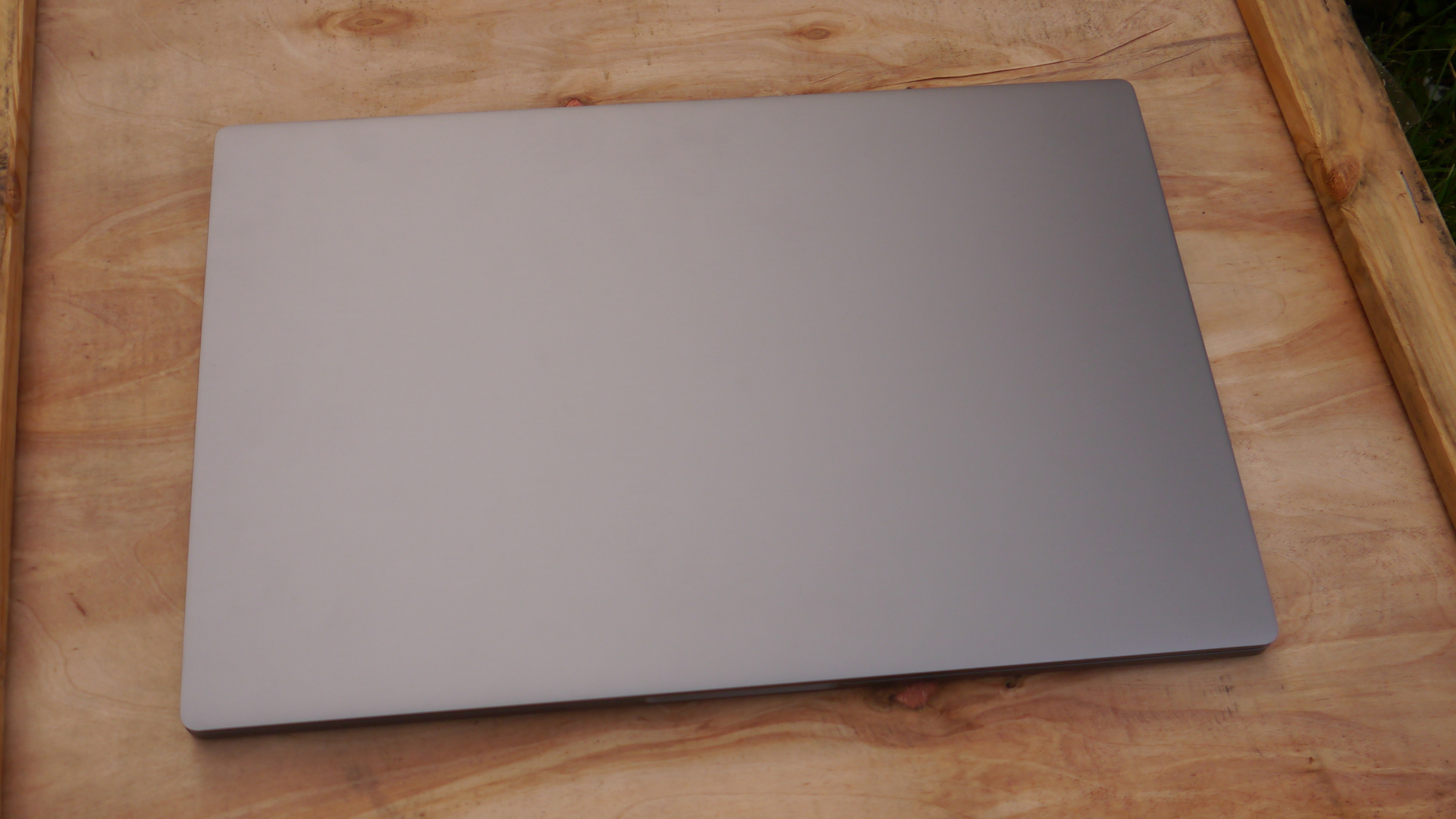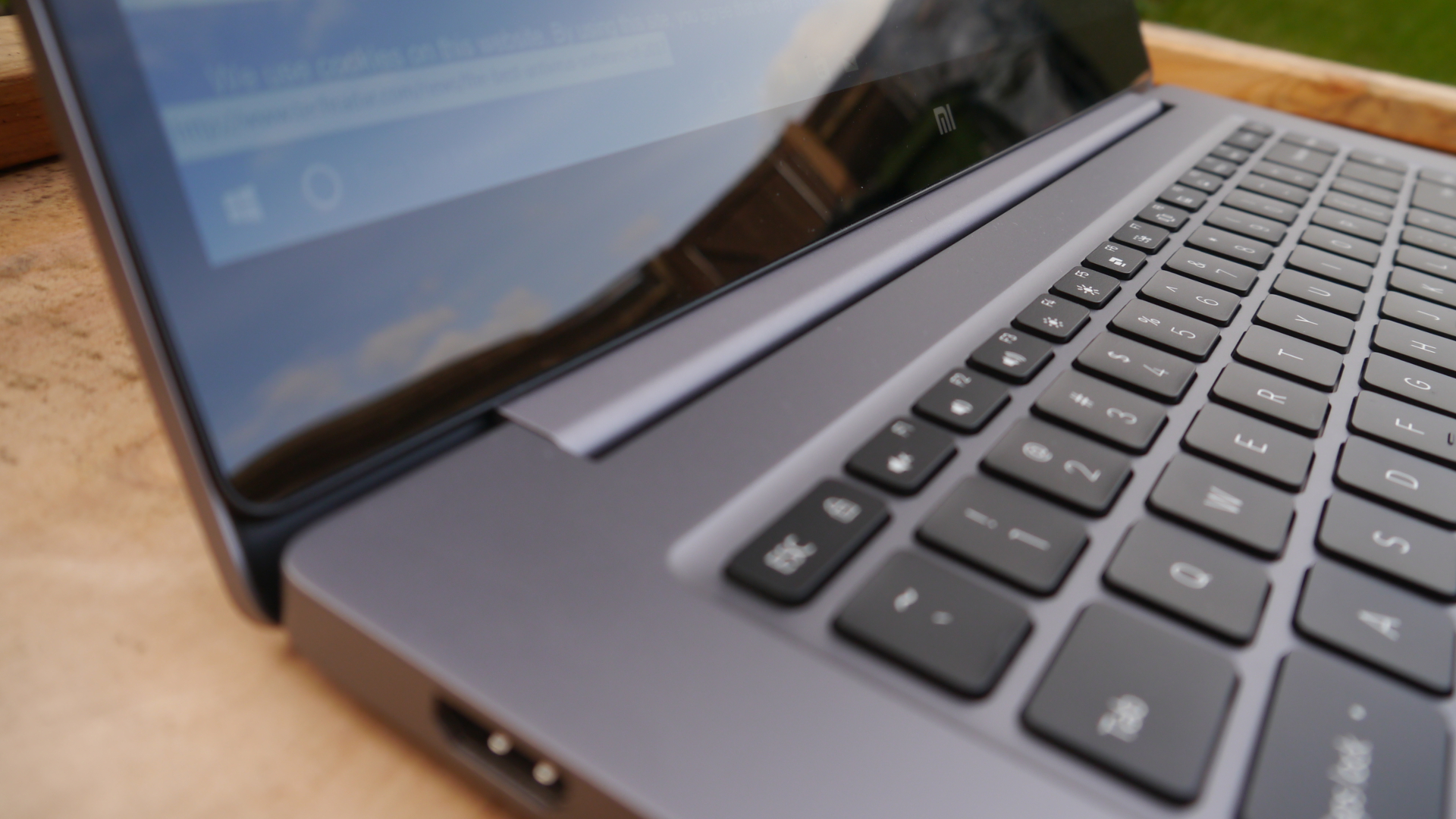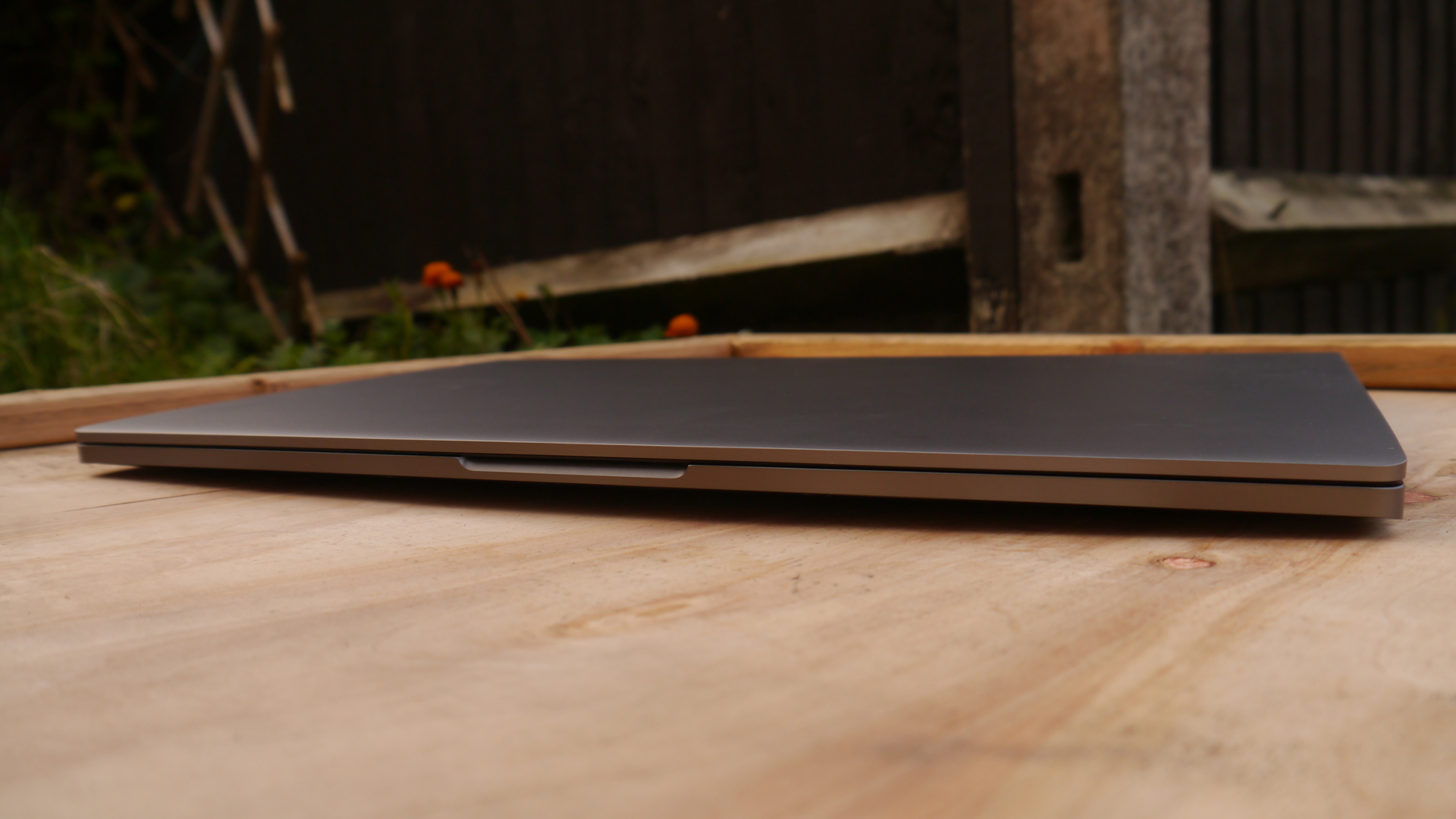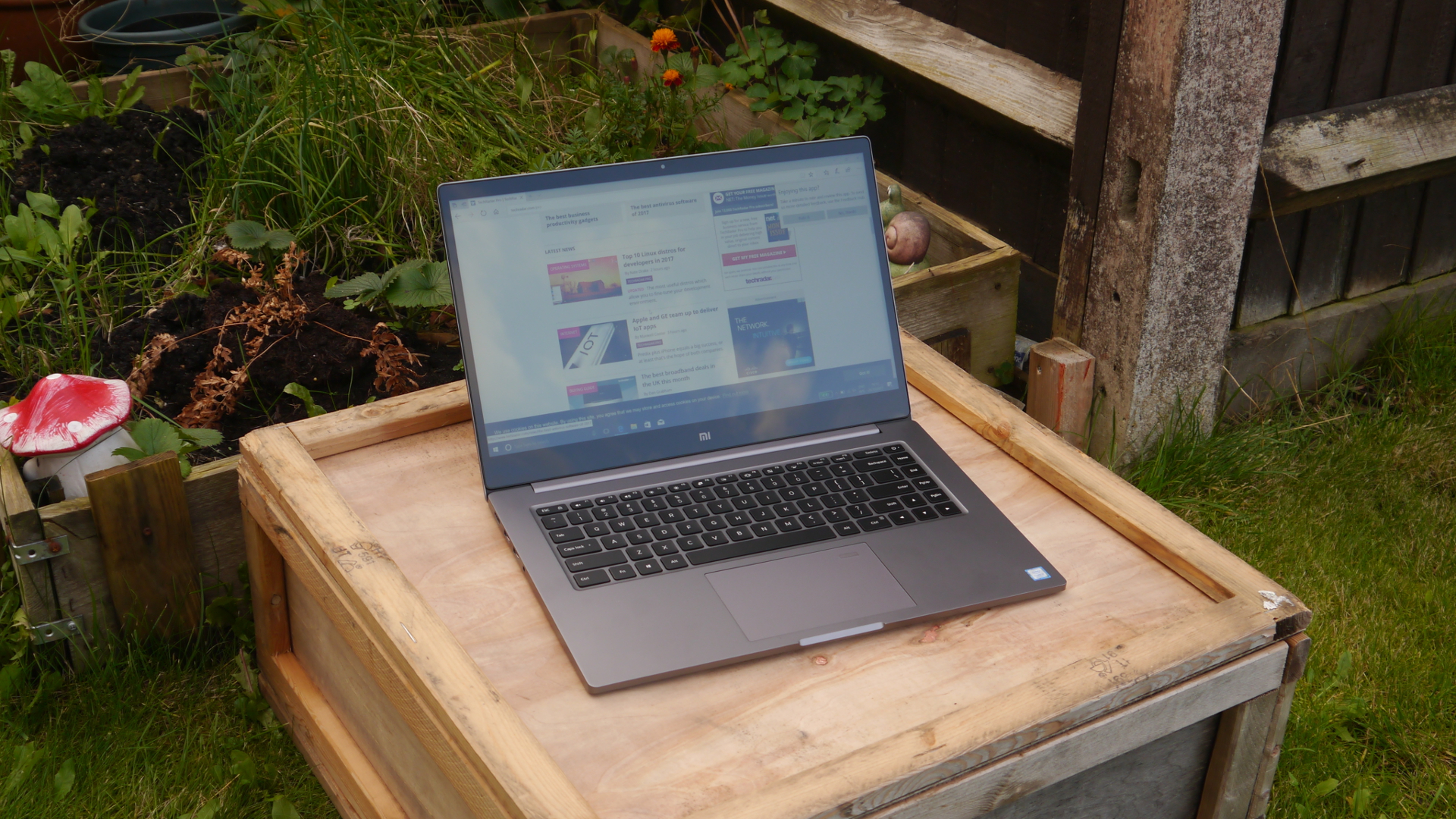Why you can trust TechRadar
Usage and performance
This laptop performed more like a Core i7 than a Core i5-powered model, especially on heavily-threaded applications like Cinebench where the extra grunt of the Nvidia discrete GPU came in handy. The Mi Notebook Pro achieved a staggering 89.44 fps on that benchmark, an almost unheard-of score for a non-workstation device.
Here’s how the Xiaomi Mi Notebook Pro performed in our suite of benchmark tests:
Passmark: 3956
Passmark CPU: 8553
CPU-Z: 399 (single-thread); 1947 (multi-thread)
Geekbench: 4130 (single-core); 14124 (multi-core); 41444 (compute)
Cinebench: OpenGL: 89.44 fps; CPU: 566
CrystalDiskMark: 1849 MBps (read); 1221 MBps (write)
Novabench: 1583
Atto: 1810 MBps (read, 256mb); 1200 MBps (write, 256mb)
Sisoft Sandra (KPT): 11.07
Windows Experience Index: 7.7
UserBenchmark (higher is better): 72
Its read/write speeds struggled to match those of the Xiaomi Notebook Air 2017 despite using the same Samsung PM961 NVMe SSD. You should not see any big difference in real life performance for most tasks.
The 61Whr 4-cell battery also allowed this machine to reach a more-than-decent 7 hours 22 minutes of longevity, which is short of what the MacBook Pro can achieve, but still better than the majority of Windows devices.
Note that the laptop came with a Chinese version of Windows 10 Home Edition and had to be reformatted in order to get the benchmarks to run.
The laptop was noisy under heavy usage, which was expected. There are two fans that are fed by a heatpipe (which is itself connected to a large ‘thermal conductivity area’) and they kick in – with a vengeance – when the CPU/GPU becomes too hot.
The keyboard and the touchpad are above average. The keyboard offers superb feedback and good travel, on par with the big guns out there, while the touchpad is sensitive enough and responds well to finger gestures.
The screen remains the outstanding component here. We poked at it a couple of times because we mistakenly thought that it was touch-capable, but it isn’t. With a Full HD resolution and 300-nit brightness, it provides the optimum level of performance for most tasks. Colors are bright and punchy, although some might complain about the lower pixel density (lack of sharpness) usually associated with large displays.

The competition
The model sent to us for review was the cheapest of three versions available. The Xiaomi Mi Notebook Pro is also available – on pre-order at the time of writing – with a Core i7-8550U processor, and in a variant with double the system memory (16GB).
There are plenty of rivals available around the base model’s £870 ($1,140) price point. The Dell Inspiron 15 7000 is available for as little as £899 ($1,190), once you factor in a £100 discount code. It has a weaker graphics subsystem (Nvidia 940MX) but comes with a Core i7 CPU and 512GB SSD, as well as onsite service. Granted, it is not as MacBook Pro-esque as the Mi Notebook Pro, but it is rather good-looking nonetheless.
At a lower price point is the Vivobook S510 which comes with a weaker GPU and processor. This laptop, from Asus, carries a design similar to the Mi Notebook Pro but opts for a tapered profile. It is also lighter both on your bank account at just under £730 ($960) and in your backpack; note that it comes with a fingerprint reader. If you don’t need the GPU, then for roughly the same price you can opt for a more powerful Core i7 CPU instead.

HP proposes an intriguing option in the shape of the Envy x360 15. This newly released model costs £999 ($1,320), which is more than the Notebook Pro, but it offers some unique features at this price point. It is a convertible laptop for a start, which means that you can use it as a (heavy) tablet, plus it comes with an active stylus pen. HP also opted for a dual-storage configuration which pairs a 128GB system drive (SSD) with a 1TB hard disk drive. This will have an impact on battery life, but all in all, it’s an interesting alternative to traditional laptops.
Lenovo has the IdeaPad 520 at this price point, a laptop which costs around the same as the Mi Notebook Pro, but swaps the GPU for a lesser model and offers a less powerful Core i7 CPU. However, it’s probably not as exciting as Xiaomi’s offering in terms of aesthetic appeal.

Final verdict
The Xiaomi Mi Notebook Pro is a great laptop – an outstanding piece of technology, in fact. The real question is whether you want to spend almost £870 ($1,140) – and potentially far more than that if you have to add taxes – on a piece of kit knowing that you will have to reinstall Windows, and also potentially wait for months for support/repairs if anything goes wrong with the machine.
On balance, we wouldn’t do this ourselves, but if you are ready to take the punt, then this notebook promises to be a fantastic piece of kit. If not, there are plenty of other options on the market as we’ve discussed, especially if you don’t mind going down a notch in the GPU department. Expand your horizons to the more portable 14-inch or 13.3-inch form factors and you will find even more options.
While the appeal of the Mi Notebook Pro is obvious for businesses, especially among microenterprises and startups, the disadvantages far outweigh any pros. The risks are simply too high to justify buying this laptop, and sticking to a UK-based retailer will guarantee a much smoother aftersales process.
- We’ve picked out the best business laptops of 2017

Désiré has been musing and writing about technology during a career spanning four decades. He dabbled in website builders and web hosting when DHTML and frames were in vogue and started narrating about the impact of technology on society just before the start of the Y2K hysteria at the turn of the last millennium.
